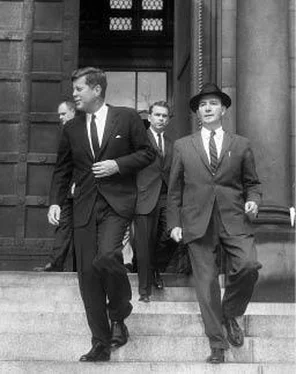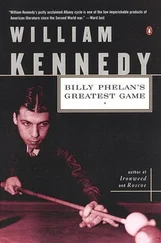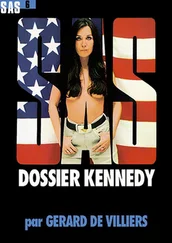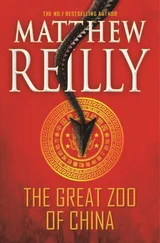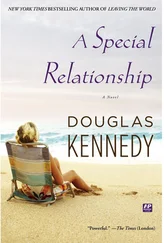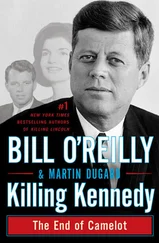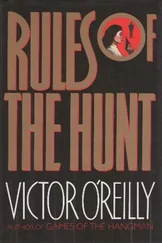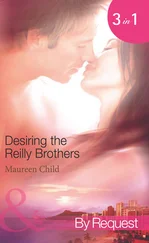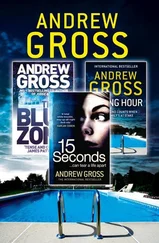O’Reilly, Bill - Killing Kennedy
Здесь есть возможность читать онлайн «O’Reilly, Bill - Killing Kennedy» весь текст электронной книги совершенно бесплатно (целиком полную версию без сокращений). В некоторых случаях можно слушать аудио, скачать через торрент в формате fb2 и присутствует краткое содержание. Год выпуска: 2012, Издательство: Henry Holt and Company, Жанр: Старинная литература, на английском языке. Описание произведения, (предисловие) а так же отзывы посетителей доступны на портале библиотеки ЛибКат.
- Название:Killing Kennedy
- Автор:
- Издательство:Henry Holt and Company
- Жанр:
- Год:2012
- ISBN:нет данных
- Рейтинг книги:5 / 5. Голосов: 1
-
Избранное:Добавить в избранное
- Отзывы:
-
Ваша оценка:
- 100
- 1
- 2
- 3
- 4
- 5
Killing Kennedy: краткое содержание, описание и аннотация
Предлагаем к чтению аннотацию, описание, краткое содержание или предисловие (зависит от того, что написал сам автор книги «Killing Kennedy»). Если вы не нашли необходимую информацию о книге — напишите в комментариях, мы постараемся отыскать её.
Killing Kennedy — читать онлайн бесплатно полную книгу (весь текст) целиком
Ниже представлен текст книги, разбитый по страницам. Система сохранения места последней прочитанной страницы, позволяет с удобством читать онлайн бесплатно книгу «Killing Kennedy», без необходимости каждый раз заново искать на чём Вы остановились. Поставьте закладку, и сможете в любой момент перейти на страницу, на которой закончили чтение.
Интервал:
Закладка:
But no man is all-knowing, and even the president of the United States is not all-powerful. Kennedy is about to make the sort of sworn enemies that come with a colossal blunder. By the time the Bay of Pigs is over he will count among these enemies not only Castro but also one of the highest-ranking officials of the U.S.government: the wily CIA chief, Allen Dulles.
* * *
Kenny O’Donnell greets Kennedy in the Oval Office and quickly briefs him on the day’s schedule. The president then strides out through another of the Oval Office’s four doors. His path takes him past the desk of his loyal personal secretary, Evelyn Lincoln, and into the Cabinet Room, where Secretary of State Dean Rusk awaits.
A brilliant man, Rusk attended Oxford as a Rhodes scholar and served as a chief of war plans as an army officer in the China-Burma-India Theater during World War II, organizing covert missions very much like the Bay of Pigs. The Georgia native sat in on the many planning meetings leading up to the weekend’s invasion. Yet he was not Kennedy’s first choice to head the State Department, and just three months into his new job, the new secretary of state remains tentative with his boss, wary of speaking his mind. At a time when Kennedy desperately needs solid advice, Rusk is unwilling to share his professional misgivings about the Bay of Pigs, including his belief “that this thin brigade of Cuban exiles has a snowball’s chance in hell of success.”
Rusk’s reluctance to advise him in an open and honest fashion is the least of the president’s troubles at this point. Nobody, it seems, will level with Kennedy. As JFK awaits word from the battlefront, he craves the company of someone who will tell him the unvarnished truth.
Sensing a crisis, the president picks up a phone and dials.
* * *
Cuba.
Americans of means once made this steamy, rum-soaked paradise their favorite tropical playground. The country’s sandy white beaches are sensual and the casinos legendary. Ernest Hemingway wrote of Cuba’s many charms, then unwound with his favorite rum libation, the daiquiri. Behind the scenes, America’s organized crime bosses such as Meyer Lansky and Lucky Luciano were as comfortable in the Cuban capital, Havana, as they were in New York City. And for decades, U.S. corporations took advantage of Cuba’s climate and thoroughly corrupt government to set up vast sugarcane plantations, oil fields, and cattle ranches.
In fact, ever since that epic moment in 1898 when Teddy Roosevelt and his Rough Riders charged up San Juan Hill to liberate Cuba from Spain, the Cuban-U.S. relationship was mostly peaceful, free of tension, and, in a word, easy.
Until 1959.
Corruption reached an all-time high under the American-friendly regime of General Fulgencio Batista, sparking rebellion among Cubans. After four years of fighting, Fidel Castro, the thirty-two-year-old bastard child of a wealthy Cuban farmer, led his guerrilla army into Havana and toppled Batista. (The general died of a heart attack in exile in Portugal, just two days before Castro’s team of assassins could complete its mission.) The United States responded to Batista’s overthrow by officially recognizing the new government.
* * *
Castro is a man of many secrets. In perhaps his most egregious episode, eleven days after overthrowing Batista’s government in 1959, seventy-five political prisoners were marched in the dead of night toward an open field outside the city of Santiago, hands tied behind their backs. There was no path, and those who slowed down or stumbled felt the sharp jab of a soldier’s bayonet in their ribs. Suddenly, a row of army trucks turned on their headlights, revealing a trench six feet deep and fifty yards long. Bulldozers were parked alongside the trench, blades lowered and ready to plow the fresh mounds of dirt back into the massive hole.
The executions were supposed to be a secret, but the prisoners’ wives and girlfriends found out and kept vigil, following the procession from a distance and gasping with horror as those headlights illuminated what would soon be a mass grave. As the women’s sobs and wails punctured the still night air, Castro’s soldiers lined their husbands and sons and boyfriends shoulder to shoulder along the edge of the ditch, all the while taunting the women with jeers and catcalls. The women wept and prayed right up until that inevitable moment when the machine guns opened fire and their loved ones toppled into the abyss.
Thus marked the beginning of Fidel Castro’s reign of terror. Soon after, a Cuban judge was shot through the head for pardoning military pilots who had flown against Castro’s forces during his guerrilla campaign. Castro then ordered the pilots convicted of genocide. When the new judge sentenced them to hard labor instead of death, he, too, was shot dead. The Cuban leader, in his own words, is “violent, given to tantrums, devious, manipulative, and defiant of all authority.”
The Cuban people soon realized that they were paying a high price for supporting the rise of Castro. But overseas, Castro’s popular facade as a revolutionary hero took hold. One British newspaper wrote that “Mr. Castro’s bearded, youthful figure has become a symbol of Latin America’s rejection of brutality and lying. Every sign is that he will reject personal rule and violence.” In April 1959, Castro spoke at the Harvard University Law School in Cambridge, Massachusetts. Even though he had used his knowledge of the law to suspend Cuba’s writ of habeas corpus, and even though the January 12 massacre was reported in the New York Times , Castro’s Harvard speech was interrupted time after time by enthusiastic cheering and applause.
On that same trip to America, the Cuban leader met with Vice President Richard Nixon, who was immediately impressed by Castro. In fact, Nixon wrote in a four-page secret memo to Eisenhower that “the one fact we can be sure of, is that he has those indefinable qualities which makes him a leader of men.”
John F. Kennedy, then a U.S. senator still months away from beginning his campaign for the presidency, knew that Batista was a ruthless despot who had murdered more than twenty thousand of his own people. Kennedy saw nothing wrong with Castro’s rise to power. And, like Hemingway, he was also fond of a daiquiri from time to time.
In 1959, Kennedy and Castro were on the verge of becoming two of the twentieth century’s greatest rivals. Both were charismatic, idealistic young men beloved by their fanatical followers. Both enjoyed a good cigar and had had long political winning streaks that resulted in each man ruling his nation. But each had a setback during his rise to power—Castro was imprisoned in the early years of his revolution; Kennedy’s painful back condition and a potentially deadly adrenal gland condition known as Addison’s disease each nearly killed him. Perhaps the most striking similarity between the two men is that Kennedy and Castro were the sort of highly competitive alpha males who never accept losing, no matter what the circumstances, no matter how high the cost.
* * *
In Cuba the costs of revolution are very high. With blood running in the streets of Havana, it was only a matter of time before America comprehended the truth. In February 1960, thirteen months after Castro seized power, a CIA briefing to the National Security Council warned of the Soviet Union’s “active support” for Castro, while also lamenting the disorganization of anti-Castro forces. The Eisenhower administration quietly began making plans to overthrow Castro’s regime, authorizing the CIA to begin paramilitary training of Cuban exiles at a secret base in Guatemala.
Castro became a hot-button issue of the 1960 presidential campaign. Kennedy vigorously attacked the Eisenhower administration, using the situation in Cuba to illustrate its weakness against communism. “In 1952 the Republicans ran on a program of rolling back the Iron Curtain in Eastern Europe,” Kennedy warned the nation. “Today the Iron Curtain is 90 miles off the coast of the United States.”
Читать дальшеИнтервал:
Закладка:
Похожие книги на «Killing Kennedy»
Представляем Вашему вниманию похожие книги на «Killing Kennedy» списком для выбора. Мы отобрали схожую по названию и смыслу литературу в надежде предоставить читателям больше вариантов отыскать новые, интересные, ещё непрочитанные произведения.
Обсуждение, отзывы о книге «Killing Kennedy» и просто собственные мнения читателей. Оставьте ваши комментарии, напишите, что Вы думаете о произведении, его смысле или главных героях. Укажите что конкретно понравилось, а что нет, и почему Вы так считаете.
